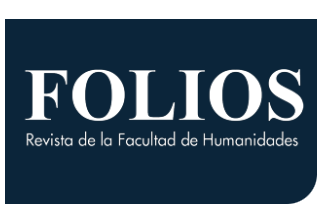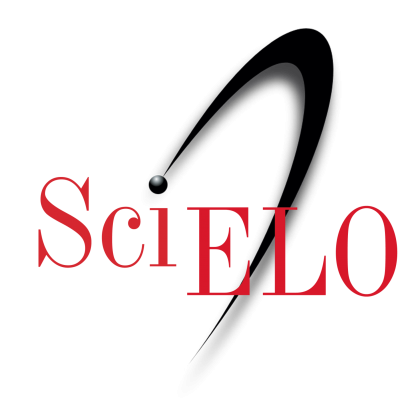DOI:
https://doi.org/10.14483/22487085.3768Published:
2011-07-01Issue:
Vol 13, No 2 (2011) July-DecemberSection:
Reflections on PraxisAn interdisciplinary theory-based ESL curriculum to teach English as a second language
Un currículo interdisciplinario de base teórica para enseñar inglés como segunda lengua1
Keywords:
Aprendizaje de segunda lengua, bilingüismo, inmigrantes, ESL, literacidad, salud (es).Keywords:
Second language learning, bilingualism, immigrants, literacy, ESL, health literacy (en).Downloads
Abstract (en)
Among Hispanic immigrants in the United States (US), learning English is considered necessary for economic and social achievement. As a consequence, there is a high demand for English as a Second Language (ESL) classes. Despite the recognized benefits of ESL programs, both at the individual and social levels, more research is needed to identify education strategies that effectively promote all aspects of learning English as a second language. This article describes an ESL curriculum that incorporates a theory-based pedagogical approach specifically designed for immigrant Hispanic adults on the US-Mexico border region. The article also describes the implementation of the curriculum as well as the results of the evaluation, which was conducted using both quantitative and qualitative methods. Quantitative results indicate that the participants significantly improved their English proficiency (L2). Qualitative results suggest that participants were positively impacted by both the content and pedagogical approaches used by the curriculum. Their experience with the ESL class was positive in general. It can be concluded that the curriculum achieved its objective. This approach could serve as a model for second language teaching for adults.
Abstract (es)
Para los inmigrantes hispanos de los Estados Unidos (EEUU) aprender inglés (L2) es considerado necesario para progresar y funcionar en la sociedad, y hay una gran demanda de clases de inglés como segunda lengua o English as a Second Language (ESL). A pesar del reconocido beneficio individual y social de los programas de ESL, todavía se debe potenciar la investigación de estrategias educativas eficaces en los diferentes aspectos del aprendizaje del inglés como segunda lengua. Este artículo describe una estrategia pedagógica de base teórica incorporada en un currículo de ESL para hispanos inmigrantes adultos en la frontera entre EEUU y México. Igualmente el presente artículo describe la implementación y evaluación del currículo mediante métodos cuantitativos y cualitativos. Los resultados cuantitativos indican que los participantes mejoraron significativamente su nivel de L2. Además, los resultados cualitativos sugieren que los participantes recibieron satisfactoriamente tanto el contenido como la metodología pedagógica del currículo, y en general declararon haber tenido una experiencia positiva con la clase. Este trabajo podría servir de modelo para la enseñanza de una segunda lengua para adultos.
References
American Medical Association. (1999). Ad hoc committee on health literacy for the council on scientific affairs. Journal of the American Medical Association, 281, 552-557.
Barton, D. (1994). Literacy: An introduction to the ecology of written language. Oxford, UK: Blackwell.
Berkman, N. D., DeWalt, D. A., Pignone, M. P.,Sheridan, S. L., Lohr, K. N., Lux. L., et al. (2004). Literacy and health outcomes. (Tech. Rep. No. 87). (AHRQ Publication No. 04-E007-2). Rockville, MD: Agency for Healthcare Research and Quality.
Brown, E. R., Ojeda, V. D, Wyn, R., & Levan, R. (2000). Racial and ethnic disparities in access to health insurance and health care. Washington, DC: UCLA Center for Health Policy Research & Kaiser Family Foundation.
Cohen, J. (1998). Statistical power analysis for the behavioral sciences. Hillsdale, NJ: Lawrence Erlbaum Associates.
Crandall, J., & Peyton, J. (Eds.). (1993). Approaches to ESL adult literacy instruction. Washington, DC: Center for Applied Linguistics & Delta Systems.
Creighton, S., & Hudson, L. (2002). Participation trends and patterns in adult education: 1991 to 1999. National Center for Education Statistics (Tech. Rep. No. NCES 2002–119, February). Washington DC: U.S. Department of Education, Office of Educational
Research and Improvement.
Duke, N., Purcell-Gates, V., Hall, L.A., & Tower, C. (2006). Authentic literacy activities for developing comprehension and writing. The Reading Teacher, 60(4), 344-355.
Fitzgerald, N. B. (1995). ESL instruction in adult education: Findings from a national evaluation. Washington DC: National Clearinghouse for ESL Literacy Education.
Forstrom, J., Pitt, M., Vargo, M., & Velasco, S. (2008). Excellent English: Language skills for success. New York: McGraw Hill.
Grognet, A. G. (1997). Performance-based curricula and outcomes: The mainstream English language training project (MELT) updated from the 1990s and beyond. Washington, DC: Center for Applied Linguistics.
Knowles, M. (1984). The adult learner: A neglected species. Houston, TX: Gulf Publishing Company.
LaMachia, J., & Morris, E. (2001). Teachers’ concerns about incorporating health into adult education. Field Notes 10(4).
Lankshear, C., & Knobel, M. (2008). Digital literacy and the law: Remixing elements of Lawrence Lessig’s ideal of “free culture.” In C. Lankshear & M. Knobel (Eds.). Digital Literacies: Concepts, Policies and Practices, (pp.282-303). New York: Peter Lang.
National Center for Education Statistics. (2005). National Assessment of Adult Literacy: A first look at the literacy of America’s adults in the 21st century (NCES Publication No. 2006470, December). Washington, DC: Author.
Povenmire, A.V, & Hohn, M. (2001). Why teach health. Field Notes 10(4).
Rudd, R. E., & Moeykens, B. A. (1999). Adult educators’ perceptions of health issues and topics in adult basic education programs. National Center for the Study of Adult Learning and Literacy. (NCSALL Tech. Rep. No. 8). Cambridge, MA: Harvard School of Public Health.
Rudd, R. E., Moeykens, B. A., & Colton, T. C. (1999). Health and literacy: a review of medical and public health literature. In: J. Comins, B. Garner, & C. Smith (Eds.), Annual review of adult learning and literacy. San Francisco: Jossey-Bass.
Rudd, R. E., Zacharai, C., & Daube, K. (1998). Integrating health and literacy: adult educators’ experiences. National Center for the Study of Adult Learning and Literacy. (NCSALL Tech. Rep. No. 5). Boston, MA: NCSALL/World Education.
Singleton, K. (2002a). Health literacy and adult English language learner. Washington, DC: National Center for ESL Literacy Education, Center for Applied Linguistics.
Street, B. (1995). Social literacies: Critical approaches to literacy in development, ethnography, and education. London: Longman.
U.S. Department of Education, Institute of Education Sciences, National Center for Education Statistics. (n.d.). 1992 national adult literacy survey and 2003 national assessment of adult literacy. Washington, DC: Author. U.S. Department of Health and Human Services. (2000). Healthy people 2010: Understanding and improving health (2nd ed.). Washington, DC: U.S. Government Printing Office.
Valdés, G. (1991). Bilingual minorities and language issues in writing: Toward profession-wide responses to a new challenge (Tech. Rep. No. 54). Berkeley, CA: University of California, Center for the Study of Writing.
Valdés, G. (2005). Bilingualism, heritage language learners, and SLA research: Opportunities lost or seized? The Modern Language Journal, 89(3), 410-426.
Weiss, B. D., Hart, G., McGee, D. L., & D’Estelle, S. (1992). Health status of illiterate adults: Relation between literacy and health status among persons with low literacy skills. Journal of the American Board of Family Practice, 5(3), 257-264.
Wolf, M. S., Gazmararian, J. A., & Baker, D. W. (2005). Health literacy and functional health status among older adults. Archives of Internal Medicine, 165(17), 1946-1952.
How to Cite
APA
ACM
ACS
ABNT
Chicago
Harvard
IEEE
MLA
Turabian
Vancouver
Download Citation
Metrics
License
This work is licensed under a Creative Commons Attribution-NonCommercial-NoDerivatives 4.0 International License.
Attribution — You must give appropriate credit, provide a link to the license, and indicate if changes were made. You may do so in any reasonable manner, but not in any way that suggests the licensor endorses you or your use.
NonCommercial — You may not use the material for commercial purposes.
NoDerivatives — If you remix, transform, or build upon the material, you may not distribute the modified material.
The journal allow the author(s) to hold the copyright without restrictions. Also, The Colombian Apllied Linguistics Journal will allow the author(s) to retain publishing rights without restrictions.














.JPG)










